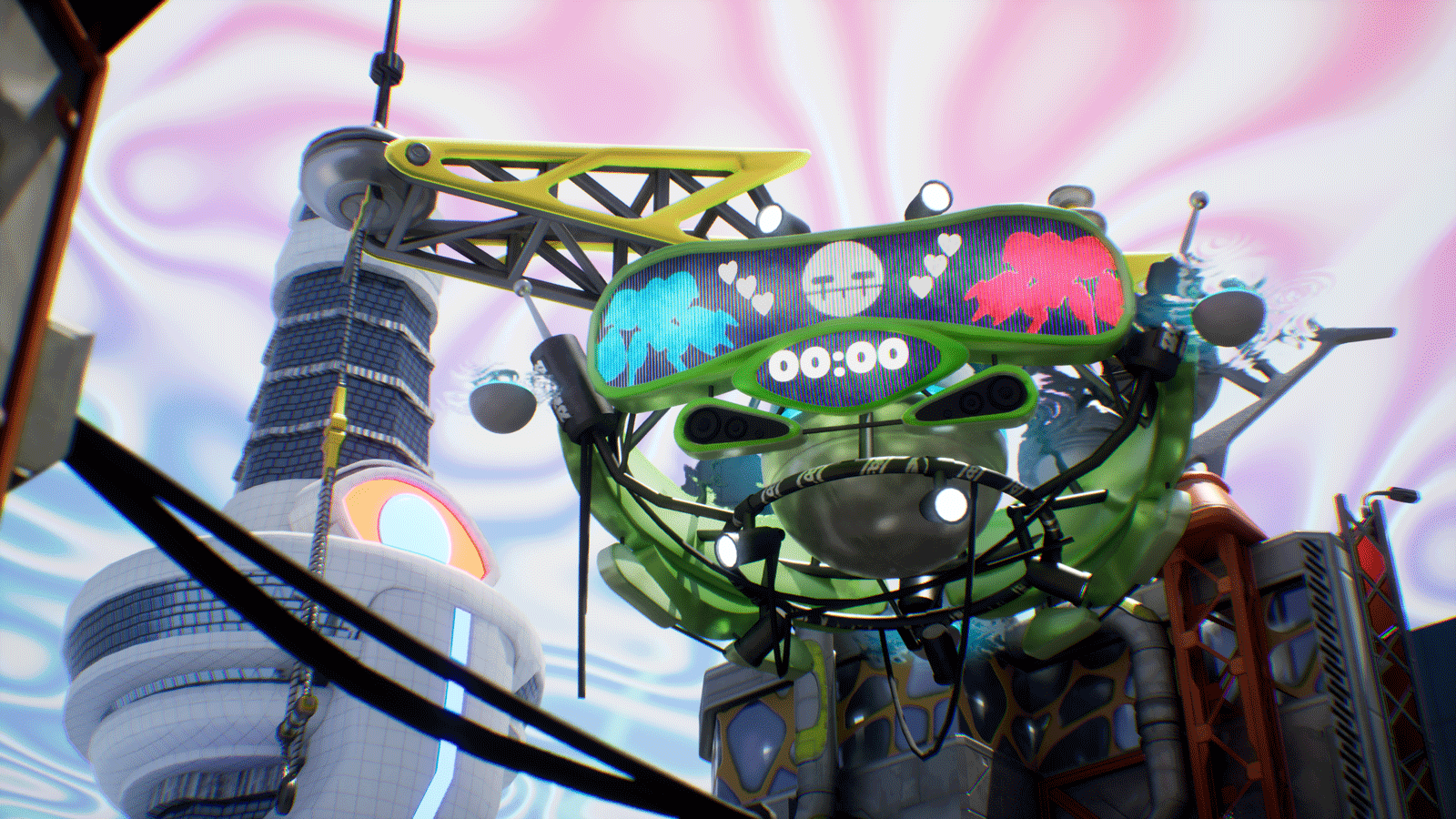I am currently the Art Director and a Technical Artist at Genpop Interactive, where I am helping shape our debut title, SLiMECORE. As part of a small studio, I take on a wide range of responsibilities. I balance leadership duties that guide the game’s overall artistic vision with hands-on contributions in technical art and lighting.
The documentation below highlight the art direction I established for the project, including assets developed collaboratively across the team, as well as areas where I was more directly involved beyond my role as Art Director.







Level lighting and art direction.
Level lighting and art direction. Showing the versatile Slime Veil shader that I developed which incorporates the swirl motif of our logo “S” as seen in our sky shader. Also showing the slime skin shader that I developed in various instances. The “translucent” using subsurface and emissive techniques as seen in the Klaypool Slime form, as well as the slightly more dense and opaque as seen in the body of Scanner.
Arena scoreboard art direction, 3D modeling/texturing, and gameplay implementation. These scoreboards dynamically fly around the map in various high combat areas to show game time and the current game score. A perfect example of our Grind Fiction art direction.



Target Dummy art direction and texture painting/material set up. Our target dummies are one of the ways we allow for player expression with customization. I designed these target dummy skins as both a proof of concept for Art Direction as well as for the system necessary for players to be able to swap between skins. My role was to create a PBR shader structure that could accommodate an iterative design and recoloring in engine, so we could easily create more variations.
Art direction and gameplay design for Slime Fences. We needed a variation of our Slime Veil that could be seen through but not shot through, and only passed through in slime form. A great example of the Grind Fiction art direction where we mix the realistic and gritty fence with the scifi, yet grounded, traffic-light slime fence clips to show players in a diegetic manner how to interact with this object.
A simple material function I developed for other tech artists on the project to use in various effects and shaders. The swirly motif takes on the swirls of the “S” in our logo while exuding a slime fantasy and grind fiction aesthetic.
The swirls can be seen throughout in the images shared here on my portfolio, from the sky shader, to the slime floors, and the slime veil, unifying the slime in the SLiMECORE universe.
Home Screen environment design, lighting, and art direction.
Example of the level lighting showing the dynamic sky shader I developed for our SLiMECORE universe.



I developed our slime floor shader in collaboration with engineer Dan Locke to integrate closely with gameplay systems. It’s a PBR-based transitional shader that shifts from an artist-authored material to a dynamic slime surface driven by gameplay. The idea behind it is that players reveal the slime underlying the entire SLiMECORE environment by breaking through its facade layer, exposing the slime that lies beneath. The shader uses my custom swirl function shared across multiple slime materials in the project, and incorporates dynamic vertex painting for grime and scratches layered over standard PBR textures. In its current optimization, the shader runs at 363 instructions.
Parallax Occlusion Mapping variation of slime reveal that I did in early prototyping prior to using Nanite Tessellation. We still use these as decorative assets throughout the map to revel the slime that is hidden behind all walls.







